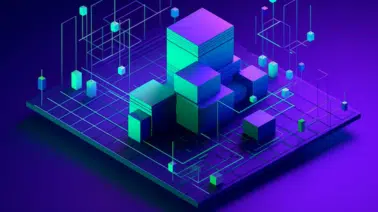Udacity’s Self-Driving Car Engineer Nanodegree program is one of our flagship programs and has been instrumental in helping Udacity students land their dream jobs in autonomous driving.
To keep pace with changing self-driving car technology, we’ve released an update to the content. Udacity is excited to introduce the refreshed Self-Driving Car Engineer Nanodegree program within the School of Autonomous Systems.
Updates to this Nanodegree program include an updated tech stack that uses version 2.1 of TensorFlow, Open3D, and the Point Cloud Library (PCL).
Also new with this update, students will use the Waymo Open Dataset for multiple course projects. Finally, students will use a third-party simulator environment, CARLA, for testing self-driving cars.
Refreshed Self-driving Car Engineer Nanodegree Program Details
The refreshed Self-Driving Car Engineer Nanodegree program will prepare you to design and train autonomous vehicles. Skills that students who complete this Nanodegree program will have include training neural networks to classify images related to driving, correspond objects from images to lidar point clouds, train models to predict trajectory of objects, predict behavior of other objects in the vehicle’s environment, program a finite state machine to plan the vehicle’s motion, and implement a Proportional Integral Derivative (PID) controller to use steering, acceleration, and brakes.
To get the most out of this course, it’s important to have prior experience in mathematics and programming. In particular, it’s important for students to know how to:
- Build object-oriented programs (ideally in Python or C++)
- Compute integrals and derivatives of polynomial functions
- Multiply matrices and understand related aspects of linear algebra
- Calculate mean, median, and standard deviation of a dataset
- Model the effects of forces on point masses
In just five months (at 10 hours a week), students who enroll in the Self-Driving Car Engineer Nanodegree program will learn machine learning skills in computer vision, autonomous vehicle sensor suites, robotic localization, behavior and motion planning, and control for an autonomous vehicle.
What is a Self-driving Car Engineer?
Self-driving car engineers are experts in programming, mathematics, and machine learning. They combine these skills to create, train, and test autonomous vehicles. Several big tech companies are hiring self-driving car engineers, including Waymo, General Motors, Mercedes-Benz, Tesla, Ford, Toyota, and BMW.
People who find success as self-driving car engineers typically enjoy doing research, solving difficult technical problems, and spending a lifetime continually learning. Many self-driving car engineers have previous experience asas robotics engineers, electrical engineers, systems engineers, or computer engineers.
Refreshed Self-driving Car Engineer Nanodegree Projects Include
Project 1: Object Detection in an Urban Environment
Create a convolutional neural network to detect and classify objects — like cars, cyclists, and pedestrians — using the Waymo Open Dataset. First, students will analyze the data, train the neural network, monitor the output, and make adjustments to try and improve performance.
Project 2: 3D Object Detection
Students will load and preprocess 3D lidar point clouds, then use it to detect and classify driving objects. From this data, students will calculate key performance metrics.
Project 3: Sensor Fusion
Students will complete multi-target tracking by fusing camera and lidar detections. They will track multiple vehicles over time using various measurement models for cameras and lidar sensors.
Project 4: Scan Matching Localization
Students will use one of two scan matching algorithms (ICP or NDT) to align point cloud scans from the CARLA simulator and recover the position of a simulated car with lidar. Students will test their car in a simulated environment, updating the vehicle’s location as it moves.
Project 5: Motion Planning and Decision Making for Autonomous Vehicles
Students will implement behavior planning and motion planning to help an autonomous vehicle avoid parked objects on the road. They will execute maneuvers like “nudge” or “lane change,” handle intersections and track the center on a traveling lane.
Project 6: Control and Trajectory Tracking for Autonomous Vehicles
Apply all skills learned over the course of the Nanodegree program to design a PID controller to perform vehicle trajectory tracking. Students are given an array of locations and simulation environments, then they will test their PID controllers in the CARLA simulator.
Learning from Top Autonomous Systems Professionals
To develop this program’s world-class curriculum, we collaborated with professionals from top-rated tech companies, like Mercedes-Benz and Walt Disney. Each of these collaborators contributed guidance and feedback to focus the program on the most in-demand skills. Each of the instructors has extensive autonomous systems engineering and teaching experience.
Instructors
- Thomas Hossler, Sr. Deep Learning Engineer
- Antje Muntzinger, Self-Driving Car Engineer at Mercedes-Benz
- Andreas Haja, Professor of Computer Science
- Aaron Brown, Sr. AV Software Engineer at Mercedes-Benz
- Munir Jojo Verge, Lead Autonomous & AI Systems Developer at MITRE
- Mathilde Badoual, PhD Student at UC Berkeley
- David Silver, Former School of Autonomous Systems Lead at Udacity
Enroll Today
If you have experience as a developer or engineer, or have a passion for autonomous vehicles, the Self-Driving Car Nanodegree program is for you.
There’s never been a better time to get into the field of autonomous systems. The average salary for a self-driving car engineer is over $70,000, with top earners making $135,000 a year. Plus, the field has been growing at a rate of 18% a year according to ResearchAndMarkets, which means lots of new jobs are opening up.
With Udacity’s combination of hands-on project-centric learning, mentorship, and community support, there’s no better way to meet the demand than by registering today for the Self-Driving Car Engineer Nanodegree program. Enroll now to learn more!



